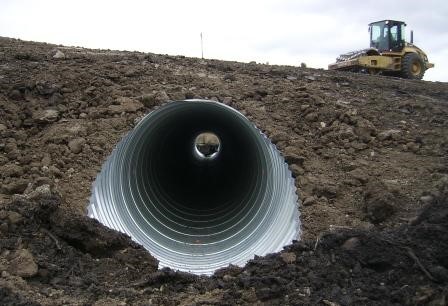Culvert Setup Made Easy: Step-by-Step Guide for Success
Setting up culverts might feel like an uncomplicated task, however making sure a successful outcome calls for careful preparation and execution. From choosing the appropriate culvert size to integrating proper drainage actions, each step in the installment process plays a vital function in the capability and durability of the culvert system. By following a systematic approach and taking note of crucial information, the installment can continue efficiently, decreasing prospective issues down the line. Keep tuned to uncover the important actions and factors to consider that can make culvert installment a seamless and effective endeavor.
Picking the Right Culvert Dimension
Selecting the suitable culvert dimension is critical for ensuring reliable water flow and structural honesty in culvert installation jobs - Pad Construction. The dimension of the culvert directly affects the circulation ability of water through the structure. A culvert that is as well tiny can bring about flooding and overflow, while one that is too large may result in reduced water rate, potentially creating sediment accumulation and clogs
To determine the ideal culvert size, aspects such as the watershed location, top flow rates, and hydraulic efficiency requirement to be meticulously considered. Computations based on these parameters assist in choosing a size that can sufficiently take care of the expected water quantity while lessening the danger of obstructions and architectural failure.
It is necessary to consult design guidelines and criteria to make sure that the chosen culvert dimension meets the task needs and regional regulations (Pad Construction). By picking the right culvert size, job supervisors can enhance water flow, protect against potential issues, and enhance the total performance and long life of the culvert installment
Preparing the Setup Website
Efficient culvert installment requires careful preparation of the installment website to ensure optimal architectural support and functionality. Before starting the setup process, it is crucial to clear the website of any particles, vegetation, or blockages that might hamper the culvert's placement.
Moreover, it is essential to consider elements such as dirt structure, groundwater degrees, and environmental impacts when preparing the setup website. Carrying out a complete site assessment can assist identify any kind of prospective difficulties or threats that may influence the culvert's efficiency. By making the effort to prepare the installment site appropriately, you can help guarantee a successful culvert installation that meets architectural needs and ensures long-lasting capability.
Placing the Culvert Properly

The grade at which the culvert is placed is critical for keeping a proper incline for water circulation. Furthermore, the culvert needs to be oriented correctly to guarantee that the inlet and outlet are in the correct places. Pad Construction.
Backfilling and Compacting the Dirt
Correct backfilling and compaction of the soil around the culvert is important to make sure stability and avoid potential concerns in company website the future. Once the culvert is appropriately positioned, the next important step is to backfill the area around it with ideal product. The backfill material should be without rocks, particles, and raw material to avoid damage to the culvert. It is advised to utilize granular material such as sand or crushed rock for backfilling, as it provides great water drainage and compaction residential properties.
After putting the backfill product, it is very important to compact it in layers of consistent thickness. Using a compactor or a mechanical tamper, compact the soil delicately to prevent harming the culvert. Compaction assists in minimizing the opportunities of settlement and makes sure consistent support around the culvert. It is vital to portable the soil uniformly on all sides of the culvert to maintain company website its structural stability.
Correct backfilling and compaction not only give security to the culvert yet also help in stopping dirt disintegration and maintaining the durability of the culvert system.
Making Sure Correct Drain Integration
Incorporating reliable water drainage remedies plays a critical function in the overall functionality and long life of culvert setups. Proper drainage integration is necessary for managing water circulation, protecting against disintegration, and ensuring the architectural honesty of the culvert system. To accomplish this, it is crucial to develop a comprehensive drain strategy that takes into consideration variables such as the volume of water anticipated, the topography of the location, and the sort of dirt present.

Furthermore, integrating features like erosion control procedures, such as riprap or plant life, can further enhance the efficiency of the drain system. By meticulously planning and carrying out these drain options, culvert setups can function efficiently and hold up against the test of time.
Conclusion
To conclude, proper culvert installment is crucial for preserving efficient drainage systems. By picking the ideal culvert dimension, preparing the installment site, positioning the culvert properly, backfilling and compacting the soil, and guaranteeing appropriate drainage combination, success Go Here can be accomplished. Complying with these steps will assist make sure the long life and performance of the culvert, eventually adding to the general success of the drainage system.